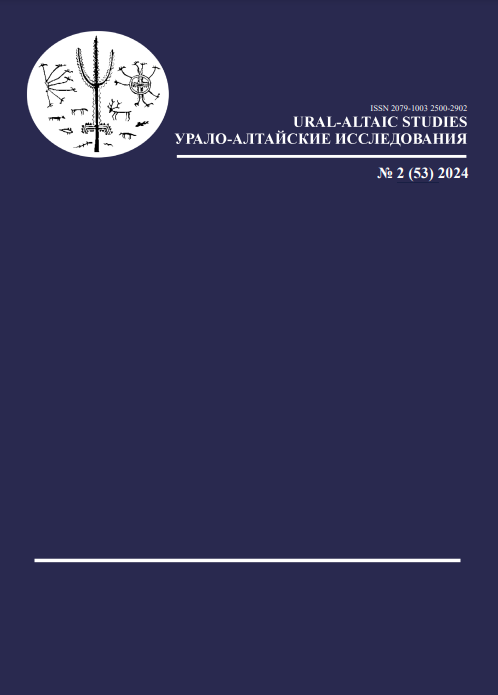К вопросу о месте верхнекамского идиома в диалектном ареале коми языка по данным платформы LingvoDoc
The position of the Upper Kama idiom in the Komi language dialectal area: Evidence from the LingvoDoc platform
Author(s): Olga N. BazhenovaSubject(s): Language studies, Phonetics / Phonology, Lexis, Comparative Linguistics, Sociolinguistics, Finno-Ugrian studies
Published by: Институт языкознания Российской академии наук
Keywords: Upper Kama dialect; Komi-Zyrian dialects; Komi-Permyak dialects; the Komi language; LingvoDoc;
Summary/Abstract: The article examines phonetic-etymological and lexical peculiarities of the Upper Kama dialect of the Komi language in comparison to other Komi dialects. The Upper Kama dialect, also referred to in scientific literature as the Zyuzdinsky dialect, the Zyuzdinsky vernacular, the Upper Kama dialect of the Permian Komi language, the language of the Kirov Permyaks, is the language of the ethnic group of Komi living in the upper reaches of the Kama River. This idiom developed independently of the area of distribution of Komi dialects and until recently existed only in an oral form. In Komi linguistics, the question of the place of the Upper Kama idiom in the dialectal area of the Komi language remains unresolved. This study aims to determine the degree of similarity between the phonetics and basic lexicon of the Upper Kama dialect and those of Komi-Permyak (northern and southern dialects) and southern Komi-Zyryan dialects of the Komi language. This is achieved through the use of the tools provided by the LingvoDoc linguistic platform (lingvodoc.ispras.ru). The study is based on four Komi-Permyak dictionaries, two audio dictionaries of south Komi-Zyrian dialects, and an audio dictionary of the Upper Kama dialect uploaded to the LingvoDoc platform. The analysis of the cognates showed that the Upper Kama dialect is the most similar to the Upper Sysola dialect of the Komi-Zyrian language in terms of phonetic and etymological criteria. However, according to the method of glottochronology, the Upper Kama dialect and the Kudymkar dialect of the Komi-Permyak language have the highest percentage of similarities in the basic lexicon. This apparent contradiction can explain the discussions regarding the place of the Upper Kama dialect within the Komi dialectal area.
Journal: Урало-алтайские исследования
- Issue Year: 2024
- Issue No: 02 (53)
- Page Range: 7-19
- Page Count: 13
- Language: Russian

